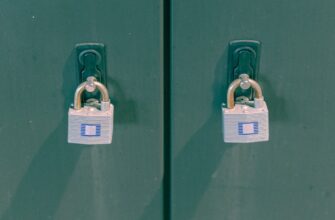👑 Airdrop Royalty: $RESOLV Awaits!
💰 Want to build your crypto empire? Start with the free $RESOLV airdrop!
🏆 A golden chance to grow your wallet — no cost, no catch.
📅 You’ve got 30 days after registering. Don't wait too long!
🌟 Be among the first movers and enjoy the biggest rewards.
🚀 This is your gateway to potential wealth in Web3.
- Why Crypto Wallet Security Can’t Be Ignored
- Step 1: Choose Your Wallet Wisely
- Step 2: Fortify With Strong Authentication
- Step 3: Backup Your Seed Phrase Like Gold
- Step 4: Maintain Software Vigilance
- Step 5: Secure Your Network Connections
- Step 6: Develop Phishing Immunity
- Step 7: Implement Multi-Signature Protection
- Step 8: Conduct Regular Security Audits
- Frequently Asked Questions
- What’s the most secure crypto wallet type?
- Can I recover crypto if I lose my hardware wallet?
- How often should I change passwords?
- Are biometric locks safe for crypto apps?
- Should I use wallet browser extensions?
- Your Security Journey Starts Now
Why Crypto Wallet Security Can’t Be Ignored
With over $3.8 billion lost to crypto theft in 2022 alone, securing your digital assets isn’t optional—it’s critical. Your crypto wallet holds the keys to your financial sovereignty, making it a prime target for hackers. This step-by-step guide delivers actionable strategies to transform your wallet into a digital fortress. Follow these 10 essential steps to sleep soundly knowing your cryptocurrency is protected.
Step 1: Choose Your Wallet Wisely
Not all wallets are created equal. Your first security decision is selecting the right type:
- Hardware Wallets (Ledger, Trezor): Offline storage—immune to online attacks
- Mobile Wallets (Trust Wallet): Convenient but require strict phone security
- Desktop Wallets (Exodus): Only use on dedicated, malware-free computers
- Avoid Web Wallets for storing significant amounts—they’re most vulnerable
Step 2: Fortify With Strong Authentication
Your first line of defense starts with access control:
- Create a 12+ character password mixing uppercase, symbols, and numbers
- Enable two-factor authentication (2FA) using authenticator apps like Google Authenticator—never SMS
- Use biometric locks (fingerprint/face ID) where available
- Never reuse passwords across platforms
Step 3: Backup Your Seed Phrase Like Gold
Lose your seed phrase = lose your crypto forever. Protect it with:
- Physical Storage: Engrave on metal plates or use cryptosteel
- Multiple Locations: Split copies between bank vaults & trusted relatives
- Zero Digital Traces: Never store photos/cloud copies or type it online
- Verification Test: Confirm backup works before funding wallet
Step 4: Maintain Software Vigilance
Outdated software is hacker bait:
- Enable auto-updates for wallet apps
- Verify update sources—only download from official websites
- Regularly update device operating systems
- Uninstall unused wallet applications
Step 5: Secure Your Network Connections
Wi-Fi vulnerabilities cause 37% of mobile crypto thefts:
- Never access wallets on public Wi-Fi
- Use VPNs with AES-256 encryption when traveling
- Disable Bluetooth when not in use
- Create a separate Wi-Fi network for crypto devices
Step 6: Develop Phishing Immunity
Spot and avoid traps:
- Verify sender addresses—look for subtle misspellings
- Hover over links before clicking to reveal true URLs
- Never share seed phrases—legitimate services won’t ask
- Bookmark official exchange/wallet sites
Step 7: Implement Multi-Signature Protection
Add banking-level security for large holdings:
- Require 2-3 approvals for transactions
- Store approval devices in separate locations
- Use platforms like Casa or Electrum for setup
- Ideal for business wallets or inheritance planning
Step 8: Conduct Regular Security Audits
Proactive monitoring prevents disasters:
- Check transaction history weekly
- Review connected dApp permissions monthly
- Scan devices quarterly with Malwarebytes
- Test backup restoration annually
Frequently Asked Questions
What’s the most secure crypto wallet type?
Hardware wallets provide maximum security by keeping private keys offline. For balances over $1,000, they’re non-negotiable.
Can I recover crypto if I lose my hardware wallet?
Yes—your seed phrase is the master key. A new device + correct phrase = full recovery. This is why seed backup is critical.
How often should I change passwords?
Every 90 days for hot wallets. For hardware wallets, focus on physical security—password changes are less critical when keys are offline.
Are biometric locks safe for crypto apps?
Yes, when combined with strong device passcodes. Biometrics add convenience without compromising security—your fingerprint data isn’t stored in the app.
Should I use wallet browser extensions?
Only for small, active trading funds. Extensions are vulnerable to malware—never store long-term savings in them.
Your Security Journey Starts Now
Implementing even 3 of these steps dramatically reduces your risk profile. Remember: In crypto, you are your own bank. Treat wallet security with the same seriousness as a vault combination. Start with hardware storage and seed phrase protection—then layer additional measures as your portfolio grows. Your future self will thank you.








